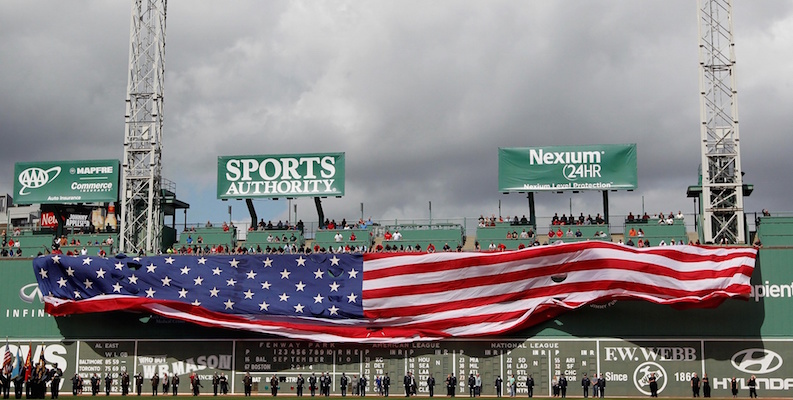Yesterday was Memorial Day, so I thought it would be good to take a look at two of the Red Sox’s more impressive-performing soldiers in World War II and Korea. Virtually every regular Red Sox starter left the team to serve in the military during WWII, but at least two of them deserve another look. One is Ted Williams, which you know. The other is Earl Johnson.
Johnson was 22 years old in late 1941, having just completed his second season on the Red Sox. He had a 4.52 ERA (and 3.97 FIP), started 12 games and, in 93.1 innings, had fewer strikeouts (46) than he issued walks (51) or allowed earned runs (47). He enlisted in December 1941 and return to the team in 1946 and stayed until 1951, bearing the nickname the “smiling Swedish southpaw.” After his playing career, he’d return to work in the Red Sox’ front office and would stay for there for three decades. He is as much of a company man as they’ve had.
For his service Johnson was given the Silver and Bronze stars and commissioned as a lieutenant for his service in the war. He was specifically cited for a moment during the Battle of the Bulge in which an Allied jeep with sensitive radio equipment was damaged by enemy fire. Under a heavy barrage, he returned to the burning jeep and removed the equipment.
He also had nine wins in relief in 1948 to lead the league.
Williams was a different story. Being Ted Williams came with its own set of rules, to which he almost always successfully bent the universe. He refused military service at first and sued the draft board twice for the right to continue playing baseball until he enlisted in the Navy reserve in May 1942 and was commissioned as a Naval Aviator for the Marine Corps in May 1944. Of Williams’ military experiences, Richard Ben Cramer wrote in the historic, hilarious, profanity-laden “What Do You Think of Ted Williams Now?”:
Ted loved the service, its certainty and ease. He never had a problem with authority. It was drawing his own lines that gave him fits. He had his fears about the mathematics, navigation problems, and instrument work. But at Amherst College, where the Navy started training, he found his mind was able, and he was pleased. And he loved the feel of an airplane. He was good, right from the start. [There was coordination to it], and care: those were natural to him. And he was a constant student, always learnings in the air. But he was proudest of his gunnery, the way he could hold back until the last pass, then pour out the lead and shred the sleeve. That wasn’t study, that was art. He got his wings near the top of his class and signed on as an instructor in Pensacola, Florida. He was happy, and good at his job. Strangely, he was freer than before.
He wouldn’t see action, though. He arrived in Hawaii just as Japan surrendered in 1945, and would go back to the Red Sox and win the 1946 MVP after posting a 10.5 WAR season, his third in a row after 10+ win seasons in 1941 and 1942. He would continue to put up monster numbers until 1950, when he suffered a broken elbow just after North Korea invaded South Korea. In 1952, he played six games for the Red Sox, homering in his last at-bat (foreshadowing!) before heading off to war.
In Korea, Williams was a member of the fantastically named “Willing Lovers” squadron, and was given the intentionally grating nickname “Bush,” for Bush League, by superiors including future astronaut John Glenn. Williams probably hated it as much as he hated being hit by enemy fire three times and for being sent home for, of all things, a severe ear infection.
In 1952, Williams returned to the Sox and put up a 7.8 win season with which he probably wasn’t satisfied, either. He’d play, and play well, until 1960, when he homered his final at-bat, befitting what Cramer called one of the few men who try for best ever. If Williams was freer than he had been in years in the military, he was free of this obligation, for maybe the only time in his amazing life.
Whatever you think of Ted Williams now, if you think of him on Memorial Day, think of Earl Johnson, too. Free from the context of baseball, they’re both war heroes.
Photo by Greg M. Cooper/USA Today Sports Images
